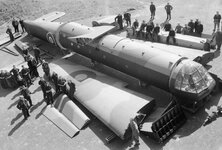Wavertree
Airman
Hi there,
After receiving a Revell model kit of the Horsa, I decided to do some research on the markings and found this wonderful post.
I bought the kit so that I could do a model of a Horsa that my father trained on at the HGCU, RAF Peplow.
After seeing so many versions, I am now confused! The training version had the yellow and black stripes on the lower fuselage and the underside of the wings - got that, but I see that there is a Horsa with yellow wingtips on the upper surface. Is this correct or was it markings for some other variant?
Help would be appreciated as I plan to have it finished for 2024 - 80 years after he did his training.
After receiving a Revell model kit of the Horsa, I decided to do some research on the markings and found this wonderful post.
Airspeed Horsa Sub collection
Hello to all of you We do not have enough words to thanks to Jed and Alastair for helping us during all the process of reasearch. Actually they did almost all the job, including visiting the IWM for photo and film references. Here are the gliders included in this series and done by my...
ww2aircraft.net
I bought the kit so that I could do a model of a Horsa that my father trained on at the HGCU, RAF Peplow.
After seeing so many versions, I am now confused! The training version had the yellow and black stripes on the lower fuselage and the underside of the wings - got that, but I see that there is a Horsa with yellow wingtips on the upper surface. Is this correct or was it markings for some other variant?
Help would be appreciated as I plan to have it finished for 2024 - 80 years after he did his training.
Last edited by a moderator:

